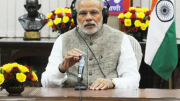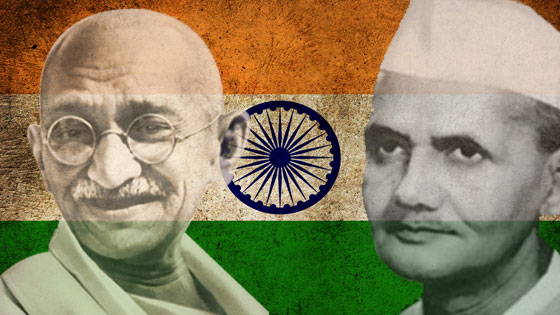IN A move that has been described by artists and critics as “shocking” and “a criminal act”, officials in Assam have decided to “replace” a statue in Guwahati of Mahatma Gandhi created by one of India’s finest sculptors, Ramkinkar Baij, because it presented a “distorted image”.The decision by Kamrup (Metropolitan) district officials was stated in a resolution taken at a meeting in Guwahati Monday: “The statue of Mahatma Gandhi, which was sculpted long back, gives a distorted image of Mahatma Gandhi. Therefore, (this) meeting has decided to sculpt another statue and replace the old one.” BJP MLA from Guwahati (East), Siddhartha Bhattacharyya, who attended the meeting, told The Indian Express: “Look at the statue. Look at the disproportionate hands and feet. They do not resemble those of the Mahatma in any manner. His face is distorted, as also the pair of glasses. That is why we have decided to dismantle it and place a new statue there.”
Asked if he knew who the sculptor was, Bhattacharyya said, “Some people claim it was made by Ramkinkar Baij. I don’t know.”
Speaking to The Indian Express, Prof Swapan Dutta, Acting Vice-Chancellor of Visva-Bharati University in Santiniketan, described the decision as “most unfortunate”. “Ramkinkar Baij is one of the most important artists in contemporary Indian art. I will go as far as to say that there can never be another Ramkinkar. There are sculptures he has made, which we have at Visva-Bharati, of Sujata and Gautam Buddha. These sculptures do not look like Sujata or Gautam Buddha — and that’s the point, it is an interpretation, it is art. There are thousands of pictures and paintings of Mahatma Gandhi all across the country, which look exactly like he did. Art isn’t about looking for similarities,” he said.
Dutta said that a collaborative project between the university and the National Gallery of Modern Art to recast Baij’s works in bronze, to ensure longevity, is in “the final stages”.
When contacted, M Angamuthu, the district deputy commissioner who chaired Monday’s meeting said, “I was not aware of the fact that it was a work of Baij.” Renuka Devi Borkataki, ex-MP and former Union minister who attended the meeting as a member of the Mahatma Gandhi & Martyrs Memorial Trust and Gandhi Mandap Trust, said, “I was not aware of who made the statue. As far as I know, it was brought from Kolkata.” The meeting was also attended by Assam Culture Minister Naba Kumar Doley.
Baij, who died in 1980 at the age of 74, started making the statue with concrete in 1968 for the state government but left the work to be completed by his assistants. Unveiled by the then chief minister Bishnu Ram Medhi on October 2, 1970, the statue stands inside the Gandhi Mandap garden atop the Sarania Hill in the heart of Guwahati.
On Tuesday, the decision to demolish the statue sparked outrage in the state. Krishna Nath Sarma, one of the few surviving freedom fighters in Assam, said he would draw the attention of the President to this “criminal and anti-national” act. “This is an insult not just to the great sculptor, but also to the Mahatma,” said Sarma, 95.
Guwahati-based veteran artist, Noni Barpujari, said, “As far as I know, they have already placed the order for a new statue. It is shocking and disgusting. It is a priceless work of art. If there has been any distortion, it is because of the government. Successive governments used to whitewash the statue with lime in the early years. Later, they started applying coats of plastic paint four times a year — Independence Day, Republic Day, Gandhi Jayanti and Martyr’s Day.”
Art critic and film-maker Manik Bora, who heads the Heritage Conservation Society of Assam, said, “Very few states would have such a treasure made by Baij, a father figure of contextual modernism. I consider it a criminal act.”
Baij’s art was rooted in Bengal, but he defied most conventions associated with art in the region. Credited with giving India its first public modernist sculpture “Santhal Family” in 1938, Baij’s monumental sculptures of Yaksha and Yakshini stand outside the RBI building in Delhi.
“There is nobody to this day who has equalled Baij in making public iconic works. Several of these are, of course, within Santiniketan. His humanist vision, relationship with the people, the tribals, is exemplary. He was a great modernist artist, able to imbibe the avant-garde modernist legacies that came to Santiniketan at that time,” said artist Vivan Sundaram, who was associated with a theatre production, 409 Ramkinkars, based on Baij. Born to a village barber in Bankura, it was perhaps Baij’s ability to assimilate from his surroundings that defined his oeuvre. If his first lessons in art came from village artisans moulding idols of deities, in the later years he also famously painted backdrops for theatre productions.
But it was in Santiniketan that Baij seamlessly merged Western expressionism with his folk sensibilities. A teacher in the sculpture department at Visva-Bharati, he found a patron in Rabindranath Tagore. Another student at the university years later, the Delhi-based artist Samit Das, recalled how stories related to the master were often discussed on campus. “Tagore was the one who supported him, not everyone appreciated his art at that time. His imagery was different from the ‘usual’ Bengal school,” said Das.





Be the first to comment on "officials in Assam have decided to “replace” a statue in Guwahati of Mahatma Gandhi created by one of India’s finest sculptors"